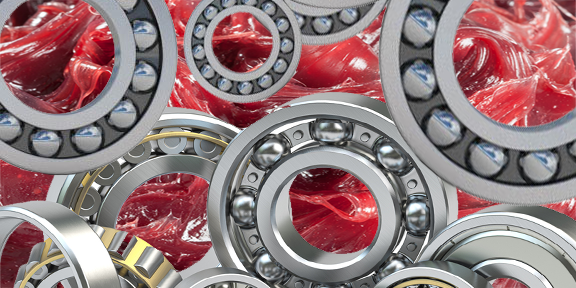Uncategorized
Penetrants vs. Lubricants (Part 2)
Last time we went over penetrating oils that are used to free frozen nuts, bolts, locks, and other metal items that usually contain rust and corrosion.
This time we will get a little more into lubricants that are used to protect metal parts and keep them from becoming stuck in the first place.
What are lubricants?
A lubricant is typically a higher-viscosity fluid (oil) or semi-solid (grease) with oil and additives in it. They are designed to coat a surface and provide a protective barrier reducing friction on moving parts. Oil is a very common lubricant that comes in different weights, or viscosity, and the lower the number the thinner the oil. Grease is oil combined with thickeners to help it adhere to surfaces better. For areas that oil or grease is not ideal there are also dry lubricants which are typically aerosol and have additives that will provide a thin film of lubricant to reduce friction.
Oil
Oil is a very versatile lubricant found in many different applications since it can be thicker or thinner as needed, and additives can be added to prevent oxidizing and corrosion. Typical places you would use oil would be on hinges, in motors, engines and in small spaces and areas that you need lubrication without the resistance that is common with grease. Oil is not recommended on surfaces that are dirty as the oil will gum up, or wet as the oil absorbs some of the water which will lower its adhesion over time and wash off the parts that need lubrication.
Grease
Grease is made by mixing oil, a thickener, additional lubricants like PTFE (Teflon), and other additives to give the desired result in different applications. There are specialty greases for extreme pressure, marine applications, high heat, food contact and more. Grease has the same lubricating properties as oil and its texture and stickiness helps it adhere to surfaces longer. Greases can be as thin as mustard and as thick as a semi-solid like a cold stick of butter. Grease is best suited for things like gears, bearings, areas where you need the lubricant to stick to the surface, and areas with extreme conditions like dirt contact and water spray. Spray greases are ideal when you have small access areas but still require a grease. They can be sprayed into an area like an oil and will then thicken and set up to a grease.
Dry Lubricants
A dry lubricant is a great alternative when you can’t use oil or grease that will attract dust and dirt. The tiny particles that make up a dry lubricant such as graphite or silicone are super slippery. Dry lubricant usually comes in a spray form that’s been mixed with a carrier which will evaporate leaving behind a thin film of lubricant to reduce friction. Dry lubricants are perfect for locks, threaded rods and other areas with tiny parts that can’t risk getting gummed up or where you need to avoid attracting dust or dirt.
Choosing the right lubricant for the job at hand can save time, money and more!

